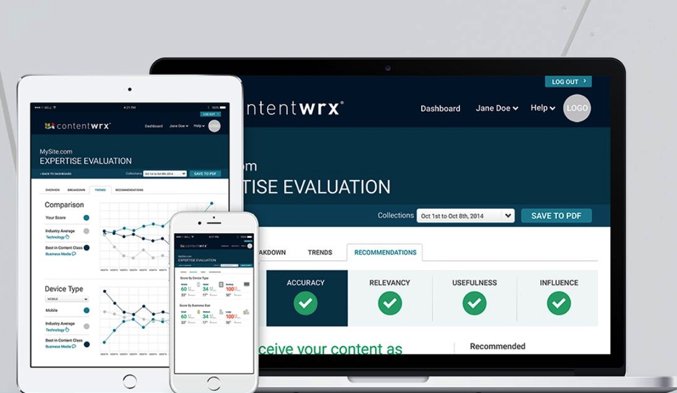
After years of big data collection and processing sitting squarely in the domain of giants like Google, Facebook, and Amazon, the explosion of the SaaS industry and the number of products on the market today enables any size organization to use data to compete. The infrastructure and tools companies once found prohibitively expensive and difficult to manage are now more affordable and easier to access. As SaaS companies continue driving momentum and growth, the question becomes should you buy a software solution to meet your business’s latest demand, or build your own? Every SaaS business will face this question at some point in time.
For some, the need is simple, like an automated email delivery system that can be quickly and easily developed. For others, it’s more complex, like a complete event data management solution, requiring a dedicated team of developers to create and maintain. Building a custom solution is a big undertaking, so it’s important to estimate the true cost before deciding on this option.
There’s a big difference between the price of something and its long term cost. Total cost of ownership (TCO) is a financial estimate that helps companies determine direct and indirect costs of a product or system. TCO goes beyond the initial purchase price or implementation cost to consider the full cost of an asset over its useful life.
The total cost of building a solution largely comes from support, maintenance, and improvements. Let’s look at the factors that would be considered when a new software is under consideration.
Steps To Calculating Total Cost of Ownership: Can Your Bottom Line Take a Custom Build?
| Steps to Calculate Your TCO | Estimated Cost | How to Calculate |
|---|---|---|
| Step 1: Cost of storage & infrastructure | Per month: | Depending on the project scale |
| Step 2: Cost of people who build/manage the service | ~$50-60K per month | Minimum Team Size: Two data engineers (~ $300-500K per year for 2 salaries with insurance and other costs) + project manager (add salary) + CTO/supervisor hours. Don’t underestimate morale/burnout factor of being on-call and fixing problems in the middle of the night! |
| Step 3: Cost of documenting & training people to use the platform | $5000 (one-time cost) | If you’re building your own data stack, you’ll need to document how everyone in your company will interface with their data: from how they securely connect to how they query, extract, and build reports on that data. At the very least, you’ll need to carefully document your solution, so that new engineers joining the team will be able to learn your stack. |
| Step 4: Maintenance costs | Technical debt and stack creep. Equivalent to #1 + #2. | Consider the impact to your technical debt when you add another 5-10 data queuing, storing, and caching technologies to your stack. |
| Step 5: Opportunity cost | Fatigue and other roadmap items that didn’t get built. Other initiatives commentary that didn’t get the needed support. | Make a list of potential missed opportunities and resulting costs: » What’s the opportunity cost of spending engineering time on data architecture vs. other key initiatives? » What is the impact to your on-call team when v1 of your architecture inevitably hits unforeseen scale limits, either losing data or sending query response times to a crawl? » What other customer requests or features will be put on hold to address common data scalability challenges? » If you didn’t hire two data engineers to build this data platform from scratch, who would you have hired and what would you build? |
For more information about calculating your total cost of ownership and choosing the right option for you, download our Build vs. Buy Ebook.
You’ll also need to be mindful of time requirements. Speed of iteration is a crucial aspect of building a better product. Although most businesses factor TCO into their decision equation to some degree, many underestimate hidden costs, which can potentially result in negative consequences.
While TCO analysis helps you to determine true costs of a new technology solution, it can also help to surface benefits that may not be readily apparent, such as improved employee productivity or increased customer satisfaction. While there is no “one size fits all” when it comes to an analytics solution, Keen’s complete event data management solution merits serious consideration based on TCO.
For example, when Keen client Content Science first set out to develop what is now ContentWRX, the leadership team knew they needed an agile product. They considered building ContentWRX from scratch, but the system’s technical requirements would have taken significant capital and six to nine months to develop. So, Content Science turned to Keen’s platform. Keen allowed the team to test the full range of the platform’s capabilities in a sandbox. Content Science quickly found that Keen had a unique ability to capture key customer behavior data directly and generate valuable reports through the front-end experience. Keen’s capabilities also freed Content Science’s development team to focus on how consumer data would be scored and analyzed, rather than on how it would be collected.

“Thanks to Keen, Content Science has been able to develop ContentWRX so that it meets the unique needs of end-users” – Collen Jones, Founder of Content Science
By using intelligent API’s, Keen’s platform gives the functionality and scalability of a custom-built solution, but without the overhead of infrastructure management, and backend components like data queuing, enrichment, storage, compute, and cache functionality. This gives Keen users a notable acceleration of time to market while significantly reducing delivery risk and TCO.
By using a service like Keen, you not only relieve yourself of ongoing upgrades and maintenance but also reap the benefits of a 50,000+ strong developer community that maintains and creates new open source libraries as technology evolves. Other benefits of using Keen include:
- Software: A data platform with APIs that let you build intelligence into anything connected to the internet saving a significant amount of time and resources.
- Service and Support: Data experts and platform engineers that are available to partner with your team to provide a proven onboarding methodology that ensures you’re able to architect your product correctly and rollout on time.
- Savings: Lower TCO and decreased delivery risk. You don’t have to recruit and hire a data engineer (or a few) to build and manage your data platform. You also don’t need to train a new one if someone from your team leaves the job.
- Business value: You can quickly become a more intelligent and data-informed organization while keeping full control of your data—the same as when you operate your own data platform. Start building and selling new data products and features for your teams and customers. Build automation on your data and become a more efficient business. Take advantage of Keen’s limitless customization and extensibility, and stream data to other systems.
At Keen, our goal has always been – and remains – to help make you more successful. Ready to leverage Keen’s complete event data management platform to accelerate deployment of real-time, intelligent data applications and quickly embed intelligence throughout your business entire business stack? Request a demo today.



